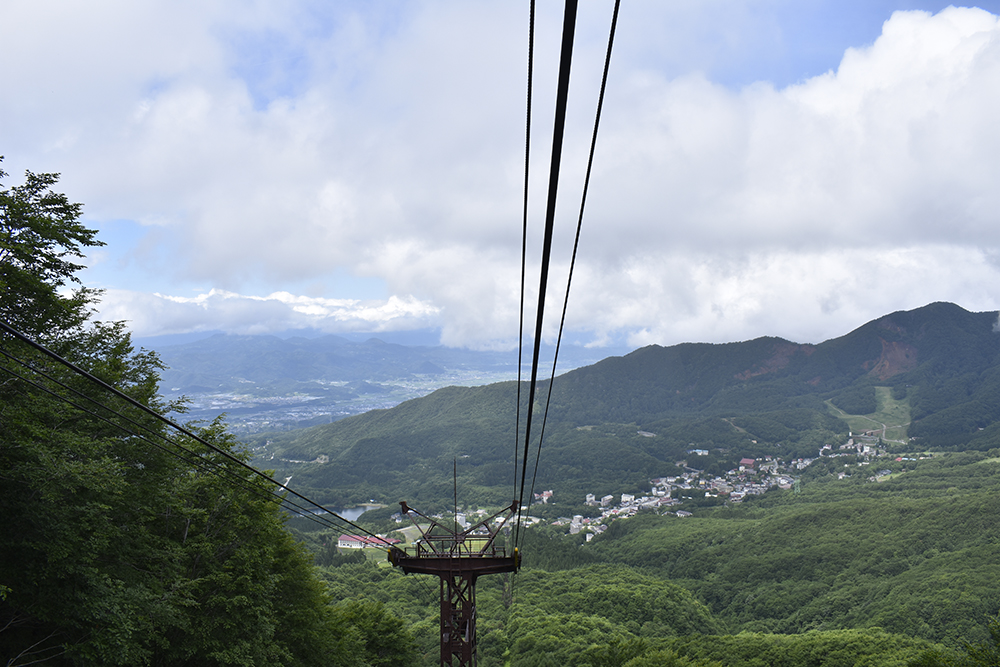It’s time to explore the undiscovered beauty and rich history of Yamagata and Fukushima
Every year, cities like Tokyo, Kyoto and Osaka draw countless visitors to Japan for their awe-inspiring sights, fantastic food and people that uniquely define each destination. Yet there’s nothing quite like visiting a place far off the beaten path. If that type of travel experience piques your interest, then you’ll likely love everything Yamagata and Fukushima have in store.

Yamadera Mountain Temple
Located in the northern part of Japan’s main island of Honshu, Yamagata and Fukushima are two of Japan’s 10 least-visited regions by foreign tourists. By Shinkansen from Tokyo, Fukushima is 90 minutes and Yamagata 2.5 hours. These gems might be less travelled
than some of Japan’s better-known tourist spots, but they abound in natural and cultural
wonders.
The best part: you won’t be fighting to get a reservation or enough space to snap that perfect photo.
YAMAGATA
YAMADERA
Yamadera literally means “mountain temple” in Japanese, a fitting name for this scenic site where you will find Konponchudo Hall, the temple’s main hall, built in the 14th century. The famous haiku poet Matsuo Basho wrote about Yamadera upon his own visit to the temple in 1689, in a summery poem which captures the quiet, contemplative beauty of the area.
Just over 1000 steps on a beautifully forested stone path leads to the Okunoin, or “inner hall.” From the top of the Okunoin area, you will find a small number of residencies located below the inner sanctum. A few of the buildings near the top also contain small shops which offer charms, other spiritual items, or even copies of famous stories. Finally, after exploring the Okunoin, a nearby path leads to the Godaido Hall, which offers an incredible view of the valley below.
After finding your way back down to the main road, there are numerous local shops nearby where you can take a short break. If you’re looking for lunch, don’t miss out on Enzou, a restaurant famous for its Yamagata soba noodles.

Mizuko Jizo statues
GINZAN ONSEN
Ginzan Onsen is famously known for its Showa-era vibe and array of traditionally built ryokan. The area, which was originally established as an active silver mine, is now the site of some of Japan’s most impressively-built bathhouses. Cutting into the cliff sides of the surrounding mountain range, Ginzan Onsen is beautifully divided into two rows of buildings by a small river. The hot spring winds around the river into the mountains behind, leading to a 22-meter-tall waterfall with plenty of open surrounding space for getting up close.
Architecture marks one of Ginzan Onsen’s standout features, and a majority of the buildings are decorated with vibrant plastered designs, known as kote-e in Japanese. Most of the bathhouses are built in a traditional style, with the exception of one which was recently rebuilt and redesigned by the internationally famous architect Kengo Kuma. There is also a public footbath located outside, as well as plenty of shops and food stands situated around the hot spring, giving visitors the chance to have a snack, buy souvenirs, or simply sit back and relax.

Ginzen Onsen Town
TENDO CITY
Located just north of Yamagata City and ranked as the 5th largest municipality in Yamagata prefecture, Tendo has gained an established reputation as a popular
onsen hotspot within Yamagata, having become home to a number of high-
quality hot spring resorts enjoyed by many visitors each year.
And if you happen to be interested in shogi (a Japanese game similar to chess), or would like to learn, Tendo is the place to do it. Due to its history as an important center for the production of shogi pieces, monuments related to shogi can be found scattered throughout all of Tendo. Several of the city’s bridges are even named after shogi pieces. The most notable attraction related to shogi, however, is Shogimura Tendo Tower, a unique cultural facility where anyone stopping by can participate in shogi-related workshops, enjoy a meal and buy souvenir goods pertaining to the game.

Shogi chess pieces
ZAO
The Zao Mountains are a range of volcanoes on the border of both Yamagata and Miyagi prefectures. Known as one of the “100 famous mountains of Japan,” Mount Zao has several unique geological features which attract tourists year-round. Most famous is the “Okama” Crater Lake, notable for its vibrant green colour and accessible for observation during the non-winter seasons. A large visitor center with restaurants and a convenience store can be found at the “Kattadake” summit near the lake as well. From Kattadake, you can hike to the highest peak of Mount Zao in about 45 minutes, then to the top of Zao Ropeway in another 45 minutes.

View from Zao ropeway
Descending from the Zao Ropeway will lead you to Zao Onsen, a popular wintertime vacation spot known for its ski resorts. If you’re staying at Zao Onsen or just passing by, you may want to stop by Zao Onsen Yutabiya Takayudo, Japan’s first onsen-themed souvenir shop selling a selection of hot spring clothing, beauty products, as well as a series of goods inspired by kokeshi dolls. The culture of kokeshi dolls is one of the Tohoku region’s characteristic traditions, making it an attraction worth looking into if you’re in the area.

Takayudo souvenir shop entrance

kokeshi dolls |
|---|

Japanese sandals
FUKUSHIMA
TSUCHIYU ONSEN
Accessible by car in 30 minutes or by bus in 40 minutes from JR Fukushima Station, Tsuchiyu Onsen is one of the best rural hot springs in the region. Comprised of high quality traditional ryokan, including the well-known Sansuiso resort, the area is a great place to go for anyone looking to relax in solitude. Tsuchiyu Onsen also has its own unique tradition of producing kokeshi dolls, distinguishable from other dolls by their smaller heads and other recognizable features. Today, kokeshi dolls have stuck as an icon for the area, and visitors will surely find many on display when exploring.
LAKE HIBARA & URABANDAI
The history of Lake Hibara is an interesting one, as it was only somewhat recently created as the result of an eruption of Mount Bandai in 1888. The eruption spawned an impressive quantity of over 300 lakes and ponds, though Lake Hibara is most well-known as being the largest body of water created by the incident, with a length of 10 kilometers. During the warm seasons, Lake Hibara is a popular destination for kayaking, fishing and sightseeing within the Urabandai region. During the winter, the entire lake becomes frozen over, making it a popular place for ice fishing.
Yamagata and Fukushima may be a bit off the beaten path, but that’s part of what makes a visit to this eclectic and scenic area all that more memorable.

Lake Hibara
Jacob Ohrberg
Latest posts by Jacob Ohrberg (see all)
- Discover the Hidden Gems of Japan’s Tohoku Region: Yamagata and Fukushima - September 16, 2021























No Responses to “Discover the Hidden Gems of Japan’s Tohoku Region: Yamagata and Fukushima”